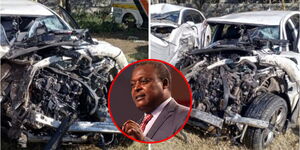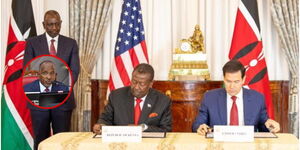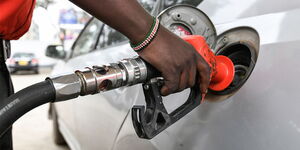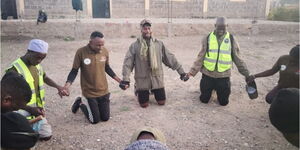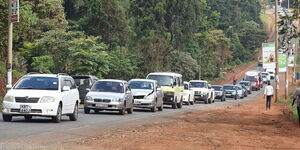It's garbage day! You gather the trash accumulated over the past couple of days, put it in a bag, and take it outside your house to the central collection point for the collectors to take it away.
Once out of sight, the garbage is ferried to a collective dumpsite. Your trash contributes to the 2,400 tonnes of solid waste generated in Nairobi every day.
This amount exceeds the capacity of both the government and private waste management outfits and is proving a menace posing a health risk to many estates where the garbage collection systems are not efficient.
For the past months, residents have raised complaints about the accumulation of waste in their estates due to irregular service
This arose from differing views between the county government and Nairobi Metropolitan Services (NMS) over the provision of services in Nairobi with the garbage contracts still under the then Governor Mike Sonko's administration.
Garbage Hotspots
Areas that have been identified as garbage hotspots are Central Eastleigh where garbage is dumped along the median strip/reserved area separating opposing lanes of traffic.
"It is an eyesore and indisputably, ticking health time bomb, a culture that remains the biggest impediment yet to a green, clean city," NMS noted in a previous statement.
Other areas that have seen the accumulation of waste near residential areas are in Kariobangi North and Korogocho areas, Kawangware's Gitanga Road and Macharia road(Kwa Dada Mary), Umoja Inner core in Nairobi's Embakasi West, Shauri Moyo and Majengo in Kamukunji as well as Huruma area.
Residents have faulted the heaps of garbage to the inefficient collection by the relevant bodies.
Dandora Garbage Site
Dandora waste area is Nairobi County's main dumpsite and is reported to be three times full. It holds over 1.8 million tonnes of solid waste against a capacity of 500,000 tonnes with a daily load of 100 trucks from various parts of the city.
Looking into alternatives, the NMS led by General Mohamed Badi announced that it would commence with the construction of a multi-million dumpsite energy plant in Dandora, Nairobi in January 2021.
Badi noted that the factory would solve the county’s garbage problem and contribute to the renewable energy pool.
The NMS head also stated that in order to facilitate the cleaning of Nairobi’s streets, the NMS plans to build waste storage stations in all 17 sub-counties. The waste collected would be sorted and categorised at these facilities.
Waste Collection Laws
Law provisions for waste management in the city are contained in the Nairobi City County Solid Waste Management Act 2015 section 36 (2 and 3).
The law says that any person who dumps or allows waste disposal in any premises, land or any other place not approved for such disposal is liable to a fine not exceeding Ksh 200,000.
Despite such penalties, garbage is still disposed of in unsanitary ways especially in informal settlements. Most of the waste finds its way into rivers polluting the waters.
Local Solutions
On the other hand, several youth groups have taken the garbage problem head-on transforming their previously heavily polluted neighborhoods into green havens.
One such group is Komb Green solutions based in the Korogocho area. The youth-led by Fredrick Okinda sought to rehabilitate the stretch of Nairobi River in their area which was a known hotspot for criminal activities into a park.
The group collected the waste dumped near the river and planted trees completely changing the scenery of the area.
They have also engaged in various forms of urban farming where they grow vegetables including kale, spinach, and cabbages which they distribute to some vulnerable families in the slums.
"We hope the cleanup process of the polluted Nairobi River will be started from the main source at Ondiri Swamp," Okinda stated during the launch of a clean-up exercise along the river on July 20, 2020.
Monthly Clean-up exercise
In October 2020, General Badi flagged off the Ngong River clean up exercise. He further announced a monthly clean up exercise for all residents of Nairobi, an exercise which was started by the former Nairobi Governor Mike Sonko but halted after a couple of months.
"Each and every citizen of Nairobi County is supposed to dedicate one day a month in a clean up exercise of the area. This is going to come into law and it will be a must," he declared.

